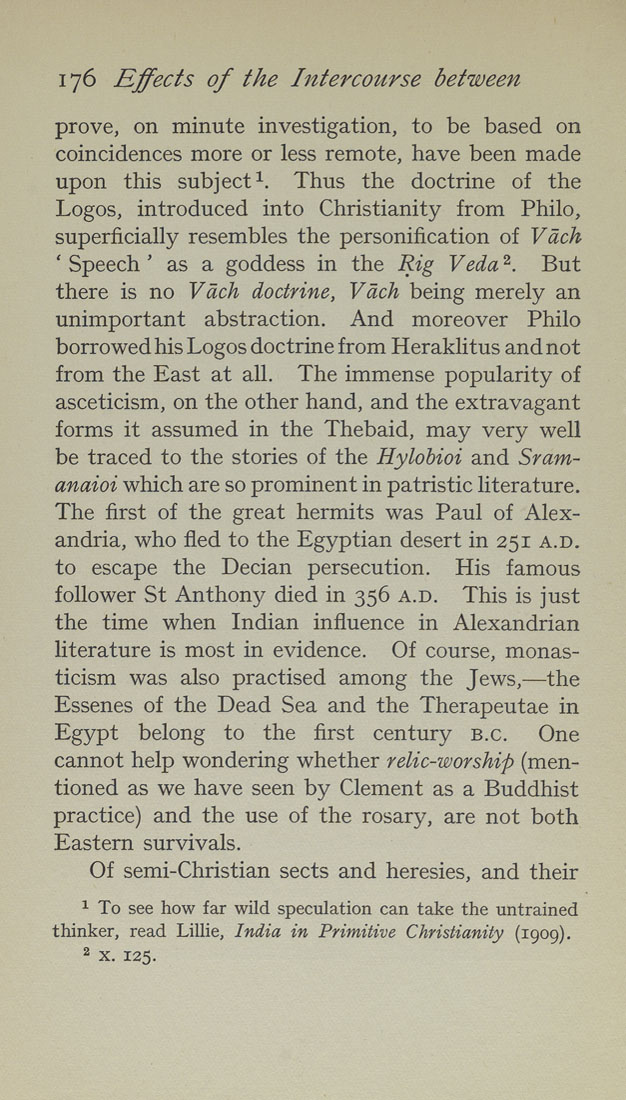176 Effects of the Intercourse between
prove, on minute investigation, to be based on
coincidences more or less remote, have been made
upon this subject^. Thus the doctrine of the
Logos, introduced into Christianity from Philo,
superflcially resembles the personification of Vdch
' Speech ' as a goddess in the Rig Veda ^. But
there is no Vdch doctrine, Vdch being merely an
unimportant abstraction. And moreover Philo
borrowed his Logos doctrine from Heraklitus and not
from the East at all. The immense popularity of
asceticism, on the other hand, and the extravagant
forms it assumed in the Thebaid, may very well
be traced to the stories of the Hylobioi and Sram-
anaioi which are so prominent in patristic literature.
The first of the great hermits was Paul of Alex¬
andria, who fled to the Egyptian desert in 251 a.d.
to escape the Decian persecution. His famous
follower St Anthony died in 356 a.d. This is just
the time when Indian influence in Alexandrian
literature is most in evidence. Of course, monas¬
ticism was also practised among the Jews,—the
Essenes of the Dead Sea and the Therapeutae in
Egypt belong to the first century B.C. One
cannot help wondering whether relic-worship (men¬
tioned as we have seen by Clement as a Buddhist
practice) and the use of the rosary, are not both
Eastern survivals.
Of semi-Christian sects and heresies, and their
^ To see how far wild speculation can take the untrained
thinker, read Lillie, India in Primitive Christianity (1909).
2 x. 125.
|








